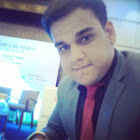GREAT LAKES GUEST LECTURE SERIES – Mr SUNIL SAYAL
CFO REGION INDIA, NOKIA SOLUTIONS & NETWORKS
10th September 2018: Nokia, a brand that has a special place in all our hearts. Growing up, there hardly was any kid or adult in the 90s who didn’t own a Nokia. So, both the Ninjas (PGPM) and the Aztecs (PGDM) 2019 batches were supercharged to welcome Mr Sunil Sayal, CFO Region India, Nokia Solutions and Networks. Mr Sayal took the time out to share his immense experience of the telecom industry and talk about the ongoing fourth industrial revolution.

Mr Sunil Sayal | CFO Region India | Nokia Solutions and Networks
Mr Sayal is a finance professional with close to three decades of experience across both MNCs and Indian Corporate houses. He is a member of ICAI and ICSI and holds commerce and law degrees from Delhi University. He has been working in the Telecommunication Industry for the past two decades with Ericsson in the past & currently with Nokia Solutions and Networks and has witnessed its evolution in India since its infancy to the present era.
Mr Sayal started his talk with the history of past industrial revolutions. Steam engine powered industries and rail-roads had sparked the first industrial revolution, followed by the second revolution energized by electricity. The third spurt of massive productivity gains was triggered by development and advancements in the domain of computing and web-based internet. Mr Sayal believes that the fourth industrial revolution would be empowered by the explosion in digital information, Internet of Things (IoT) and Artificial Intelligence, with telecom being its biggest enabler.
He discussed the growth of the telecom industry starting from Analog Voice to current 4G making telecom industry an integral part of everyone’s life. A life without a 4G connection is now not imaginable. Mr Sayal shared interesting facts regarding the contribution of the Telecommunication industry towards the development of India. Having 1146 million subscribers, telecom industry contributes to 6.5% of GDP and has generated over 4 million jobs besides attracting big scale FDI. India and China are currently the #1 consumers in global data traffic. In his words, “We sit on the cusp of a revolution in information”, and the numbers are a definite proof of his statement.

How has Airtel managed to be the #1 company?
Mr Sayal highlighted the factors behind Airtel’s immense success in India. Airtel has been the leader in the telecom industry since its inception and has always enjoyed the biggest pie in the market share. Innovation is one of the biggest factors behind Airtel’s success. To quote him, “Either you innovate or you die out”, and this seems to be the motivation behind Airtel’s mission. Airtel, which had the first mover advantage, capitalized on the opportunities it got and never failed to take the lead in bringing technological changes in its services and quality rather than following the competition. While the strategy of adopting pay-by-capacity and network outsourcing to companies like Nokia and Ericsson has given them the competitive edge in improving the quality and services, having a brilliant brand connect has helped them in establishing the link with high revenue customers.
Why weren’t Vodafone and Idea able to challenge Airtel’s reign?
The two companies which recently merged to become the biggest player in the telecom industry bringing further consolidation in the industry have historically been the second and third biggest companies in the market. The guest discussed the gaps which kind of prevented these two great companies with extremely renowned parentage from challenging Airtel’s reign. Vodafone, which brilliantly established brand connect with its unique advertisements, fell short of providing a better alternative to Airtel’s services. While getting involved in the taxation dispute hurt the company during its early days, being a global company, it was perhaps not so successful when it comes to thinking and executing with local considerations in mind. Idea, too, lagged in establishing a concrete strategy to outsource or insource their networks and were not in a dominating or leading position in the cash-rich telecom circles of the country.
Jio – the disruptor?
The latest entrant in the Industry, Jio, has been able to disrupt the market with its out of the box thinking strategy and huge risk-taking appetite. Jio entered an already saturated market with its ground-breaking innovation and technology and became the first player to launch its services with Pan-India 4G coverage which helped them reach every corner. It launched its services with path-breaking industry-changing cheap tariff plans. While most companies would prefer taking services from well-established brands, Jio took a risk by purchasing the network equipment from a new entrant– Samsung, and invested hugely in R&D from best brains across the globe and provided the best quality services to the consumer. Mr Sayal quoted Mr Ambani, “Data is the new Oil”, which seems like the motivating idea behind Jio’s strategies.
The Fourth Industrial Revolution
For his concluding thoughts, My Sayal explained the contours of the upcoming fourth industrial revolution which will be triggered by the introduction of 5G powered IoT. ”5G delivers extreme broadband, ultra-robust, low latency connectivity, and massive networking for the Internet of Things to enable the programmable world, which will transform our individual lives, economy and society”. Enabling the fourth revolution would require enabling massive capacity everywhere through Ultra-broadband, realizing the agility of software-defined business through Cloud and igniting the new businesses of IoT.
This, in his opinion, was the shape of things to come which will guide the future of the global telecommunication industry.
Author: Arpit Gupta
PGPM, Class of 2019, Great Lakes, Gurgaon

